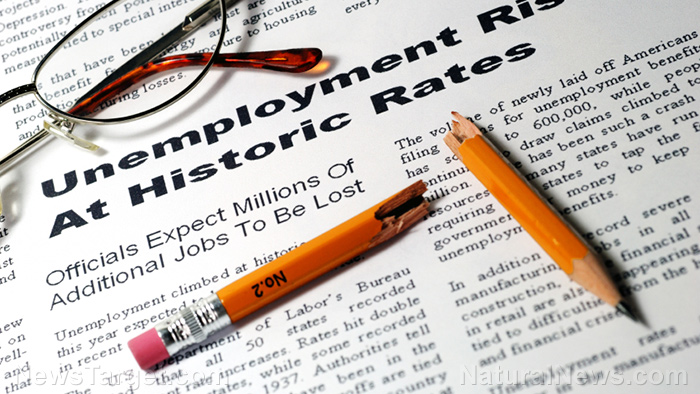More than half of US states unable to pay their debts – report
10/06/2020 / By Ramon Tomey

A report examining all 50 U.S. states’ fiscal health found that 39 of these do not have enough money to pay their bills. The eleventh edition of the Financial State of the States report, published by non-profit organization Truth in Accounting (TIA), showed that the total debt among all 50 states amounted to $1.4 trillion at the end of the 2019 fiscal year. Furthermore, it warned this amount would still balloon due to the effects of the ongoing coronavirus pandemic.
For the report, TIA calculated states’ taxpayer burden — the amount of money each taxpayer would have to shell out if the state were to pay off its debt — and states’ taxpayer surplus — the amount of money refunded to each taxpayer if in case the state still has leftover budget after paying off its bills.
Based on these calculations, 11 states would be able to pay off their debts: Alaska, North Dakota, Wyoming, Utah, Tennessee, South Dakota, Nebraska, Idaho, Oregon, Iowa and Minnesota. Taxpayers in Alaska, which the report named as the most fiscally healthy state, would be able to receive a $77,400 tax refund.
Meanwhile, five states — New Jersey, Illinois, Connecticut, Hawaii and Massachusetts — made it to the bottom of the other 39 unable to pay their debts. In particular, New Jersey taxpayers will have to pay $57,900 from their pockets to pay off debt in America’s least fiscally healthy state.
The report found that a large portion of debt incurred by states comes from unfunded retirement benefit obligations. These include pension plans and retiree healthcare liabilities. Pension debt amounted to $855 billion, and other post-employment benefits racked up to $617 billion at the end of the 2019 fiscal year.
The TIA report warned that “most of the states were ill-prepared for any crisis” now that budget deficits in the 39 states have been uncovered.
Bad policies by states rub salt into budget deficit wound
Forty-nine states require their budgets to be balanced by law; for any deficit, states would have to rely on accounting tricks — and ultimately federal bailouts.
However, borrowing huge amounts of money to pay off debts and keep operations afloat is an equally terrible fiscal decision to make. Take the case of New York City, for example.
New York state, where the Big Apple is located, ranked No. 41 in the TIA’s fiscal report alongside other states unable to pay their obligations. The effects of the coronavirus pandemic and lockdowns mandated by state and local governments brought economic activity to a screeching halt and exacerbated the city’s budget deficit issue.
Even the office of Mayor Bill De Blasio was not spared. To save on costs and address the city’s budget deficit, the mayor’s office originally planned to lay off as much as 22,000 city workers. An August report by the Epoch Times stated that these layoffs did not materialize after labor leaders convinced De Blasio not to ax city workers until state lawmakers approve a long-term borrowing plan for the city. Labor unions have been a historic constituency of the Democratic Party De Blasio is a member of — and the long-term borrowing plan amounting to as much as $5 billion will go to the 22,000 employees who are part of different New York City labor unions.
Before the planned layoffs, New York Gov. Andrew Cuomo did not agree with granting New York City borrowing power — commenting that “borrowing is easy, paying back is hard.”
Cuomo’s words definitely ring true in this scenario. Borrowing is easy, paying back is hard — especially when least fiscally healthy states such as New York and New Jersey resort to bad fiscal measures such as borrowing even more money and hiking up taxes on the rich.
Find out more about individual state debts and measures to address the problem at DebtBomb.news
Sources include:
Tagged Under: bankruptcy, borrowing, budget deficit, Collapse, debt, finances, fiscal health, fiscal policy, state debt, state economy, taxpayer burden, taxpayer surplus, Truth in Accounting, US states
RECENT NEWS & ARTICLES
COPYRIGHT © 2017 BUBBLE NEWS




















